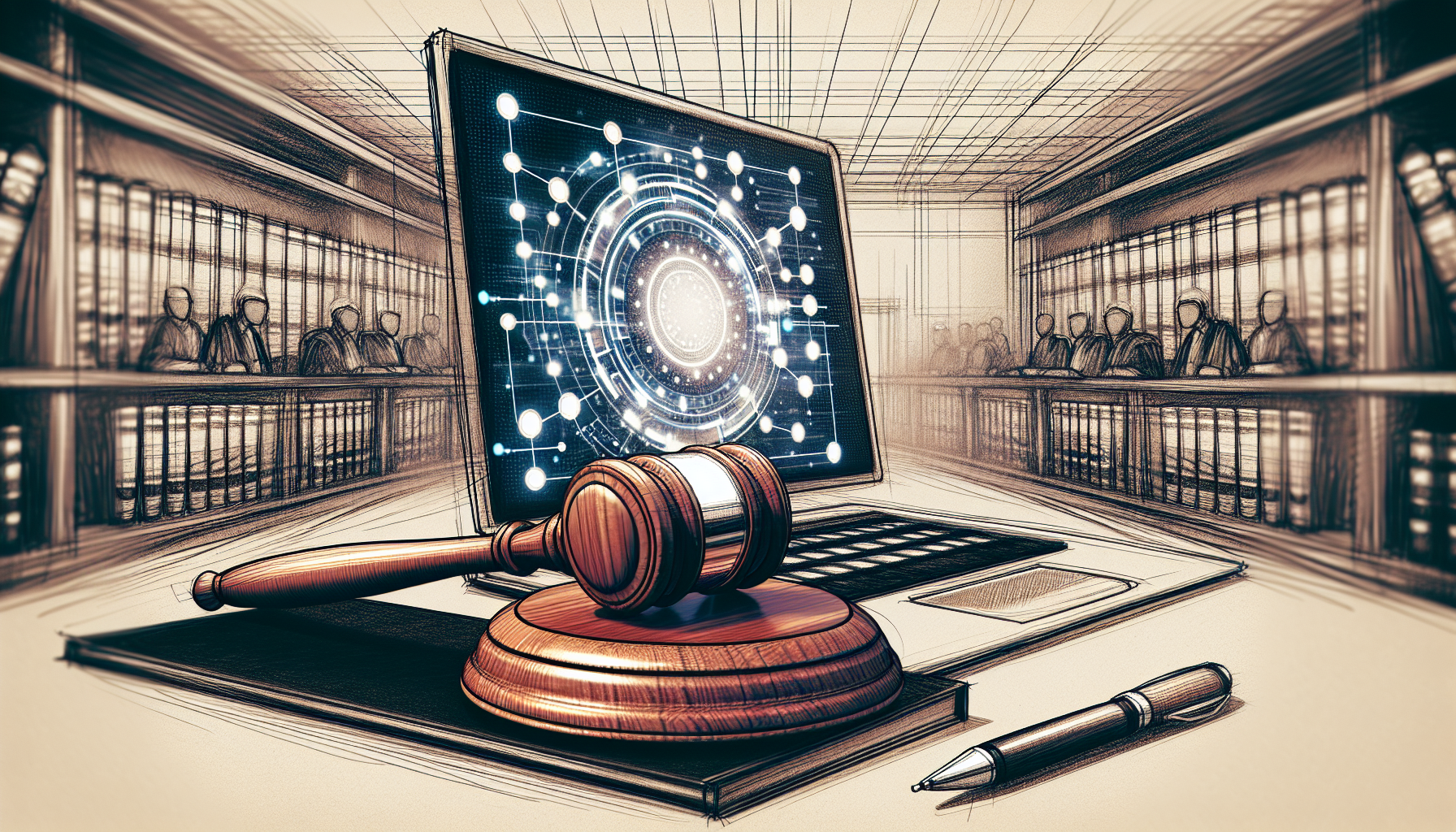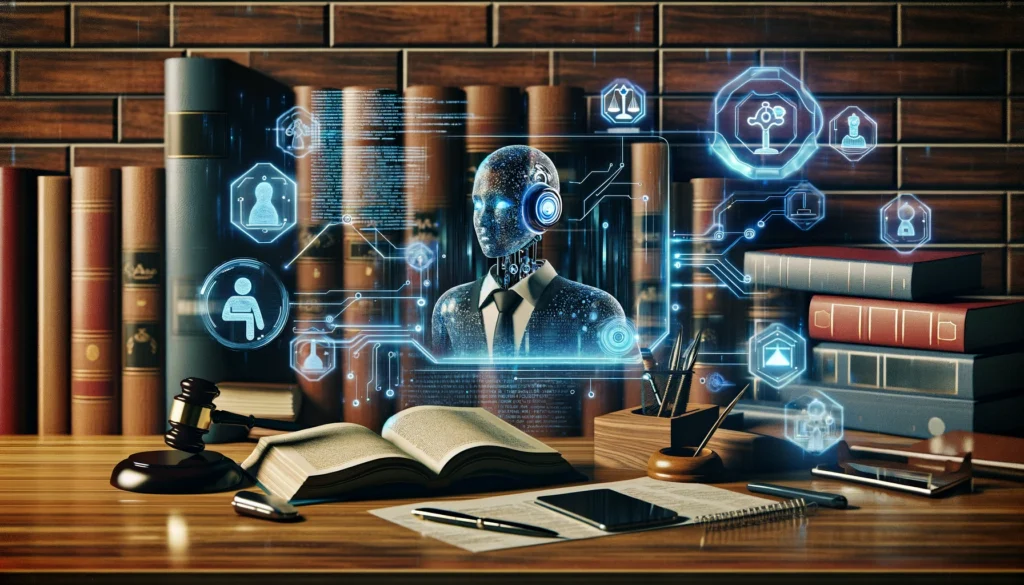
Unlocking Efficiency: The Role of ChatGPT in Probate Litigation
In the ever-evolving legal landscape, AI tools like ChatGPT are poised to revolutionize the way documents for probate litigation are prepared. Probate litigation, often fraught with intricate details and voluminous paperwork, poses significant challenges for paralegals. The assistance of AI in this domain can not only expedite the process but also elevate efficiency and precision.
Probate litigation involves legal proceedings related to the distribution of a deceased person’s estate. Paralegals, who are instrumental in preparing documentation for such cases, often grapple with tight deadlines and the need for meticulous attention to detail. This is where ChatGPT comes into play, offering capabilities that can transform traditional workflows.
Understanding these advantages seamlessly leads us to explore the practical steps involved in integrating ChatGPT into legal tasks.
The Digital Paralegal’s Toolkit: Getting Started with ChatGPT
Integrating ChatGPT into your legal workflow begins with accessing and setting up the tool. Accessing ChatGPT is straightforward; platforms such as OpenAI provide user-friendly interfaces that can be used across various devices.
Begin by setting up an account and familiarizing yourself with the basic functionalities. The interface typically includes text input and output areas where you can enter queries and receive responses. Explore the features thoroughly to ensure an effective start.
Once acquainted with the basics, it’s essential to understand how ChatGPT can streamline document creation, which we’ll delve into next.
Also read:
Beyond the Basics: Crafting Masterful Prompts
The quality of output generated by ChatGPT significantly depends on the precision and nuance of the prompts provided. Crafting effective prompts is an art that requires clarity and specificity to produce high-quality responses.
General Prompt: “Draft a motion for probate litigation.”
While this might yield a basic structure, it may lack the essential details pertinent to your case. On the other hand, a specialized prompt can be more effective.
Specialized Prompt: “Draft a motion to challenge the executor in a probate case, citing clauses related to fiduciary duty breaches and referencing the specific state laws applicable.”
The latter example guides the AI to consider specific legal angles and jurisdictional nuances, resulting in a richer, more accurate document.
Iteratively refining prompts is another crucial strategy. Start with an initial prompt, analyze the response, and tweak the input for enhanced precision. This iterative approach ensures that the output aligns closely with professional standards.
With a strong foundation in prompt crafting, the potential to automate document creation maximizes efficiency, a subject we’ll now explore in detail.
Also read:
Form and Function: Automating Document Creation
One of the most impactful uses of ChatGPT in probate litigation is drafting essential documents. From petitions and motions to affidavits, the capability to automate document creation offers immense benefits.
Consider the following prompt for creating a petition:
Prompt: “Generate a petition for probate that includes a detailed list of the deceased’s assets, beneficiaries, and the proposed executor.”
For motions, you might use:
Prompt: “Draft a motion to dismiss a creditor’s claim in probate litigation, incorporating relevant state statutes and precedent cases.”
Employing template structures allows for consistency and comprehensiveness. Below is a basic template:
Template Structure:
- Header: Case number, court, and date
- Title: Type of document (e.g., Motion to Dismiss)
- Parties Involved: Names and relationships
- Introduction: Brief summary
- Body: Detailed arguments, references to laws
- Conclusion: Summary of relief sought
- Signature: Attorney's name and contact information
Utilizing such structured templates with ChatGPT ensures the delivery of cogent and legally sound documents. The next section focuses on enhancing another critical aspect – research and case summaries.
Also read:
Detail-Oriented: Enhancing Research and Case Summaries
Legal research is another area where ChatGPT can significantly enhance efficiency. By leveraging AI, paralegals can quickly gather and analyze vast amounts of legal information, saving valuable time.
For efficient research:
- Prompt: “Summarize recent court rulings on fiduciary duty breaches in probate cases in New York.”
This prompt can yield targeted summaries, aiding in swift decision-making. Creating detailed case summaries and legal memos becomes a breeze with AI assistance.
Prompt for Case Summary: “Provide a comprehensive summary of the case In re Estate of Brown, focusing on the court’s reasoning and final judgment.”
Detailed, AI-generated insights can then be used to draft memos or inform litigation strategies, ensuring thorough preparedness.
While generating documents and insights, it becomes imperative to maintain the accuracy and compliance of such outputs, which we will delve into next.
Also read:
Review and Revise: Ensuring Accuracy and Compliance
Despite the comprehensive capabilities of ChatGPT, verifying the accuracy and legal compliance of AI-generated documents is paramount. Employ best practices to ensure the highest level of precision.
Best Practices for Verification:
- Cross-reference AI-generated content with current state laws and legal precedents.
- Utilize legal research databases like Westlaw or LexisNexis for double-checking key information.
- Engage in peer reviews, where colleagues can provide an additional layer of scrutiny.
Ensuring accuracy not only upholds legal standards but also fortifies the integrity of the practice.
Before leveraging AI, understanding the ethical considerations and confidentiality aspects is equally crucial, which we shall now discuss.
Also read:
AI Ethics and Confidentiality in Legal Practice
Incorporating AI into legal work necessitates adherence to strict ethical guidelines. Attorneys and paralegals must ensure that the use of ChatGPT aligns with professional ethical standards.
Key Ethical Considerations:
- Transparency: Clearly disclose AI usage to clients.
- Accountability: Ultimate responsibility for the content lies with the legal professional, not the AI.
Maintaining client confidentiality is paramount. Ensure that data privacy protocols are strictly followed to prevent unauthorized access or breaches.
By keeping these ethical considerations at the forefront, legal professionals can responsibly harness AI’s potential. This brings us to the final aspect – staying updated with AI advancements.
Also read:
Future-Proof Your Practice: Continuing Education and Adaptation
Staying abreast of AI advancements in the legal field is indispensable for future-proofing your practice. Continuous learning not only enhances proficiency but also enables adaptation to evolving technologies.
Key Resources for Continuous Learning:
- Legal tech conferences and webinars.
- Online courses and certifications related to AI and law.
- Professional journals and publications like The American Lawyer and ABA Journal.
By proactively engaging with these resources, legal professionals can ensure they remain at the cutting edge of technology, optimizing their practice for unparalleled efficiency and success.


